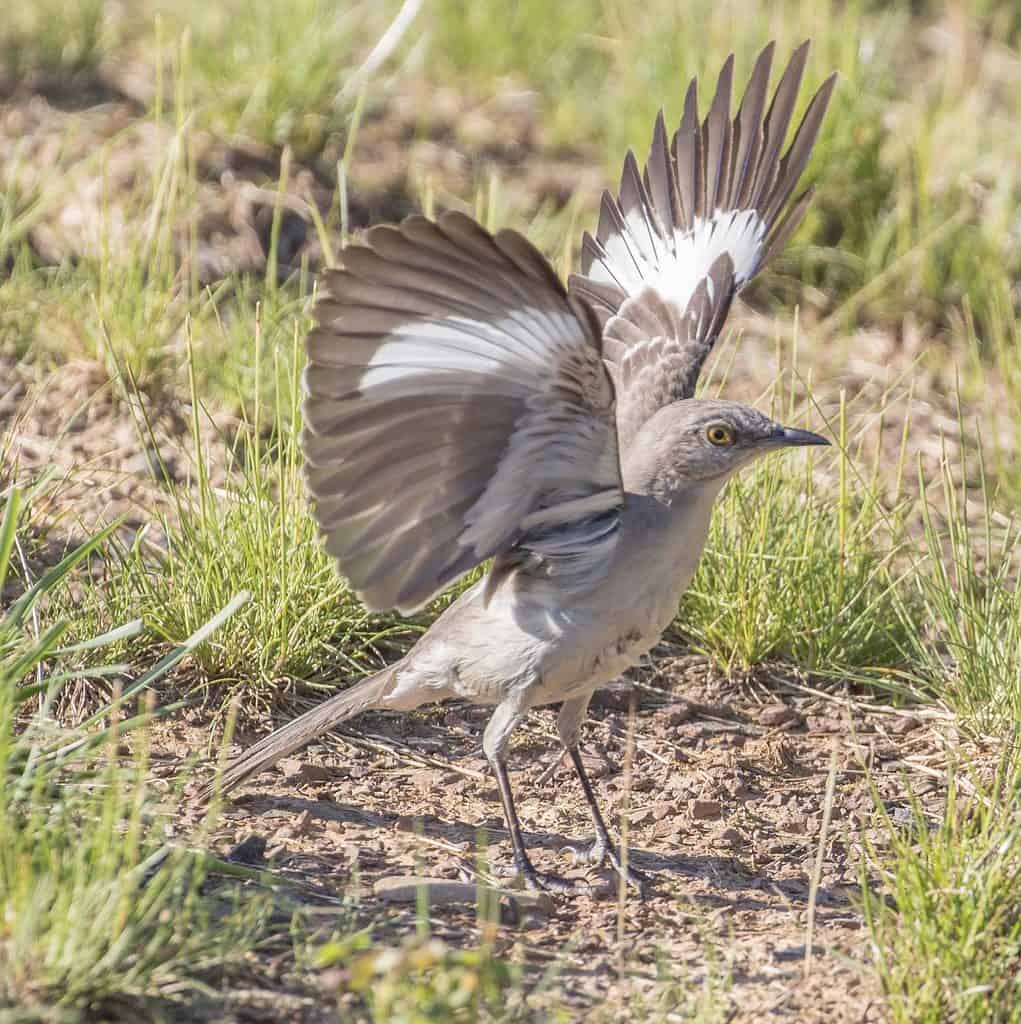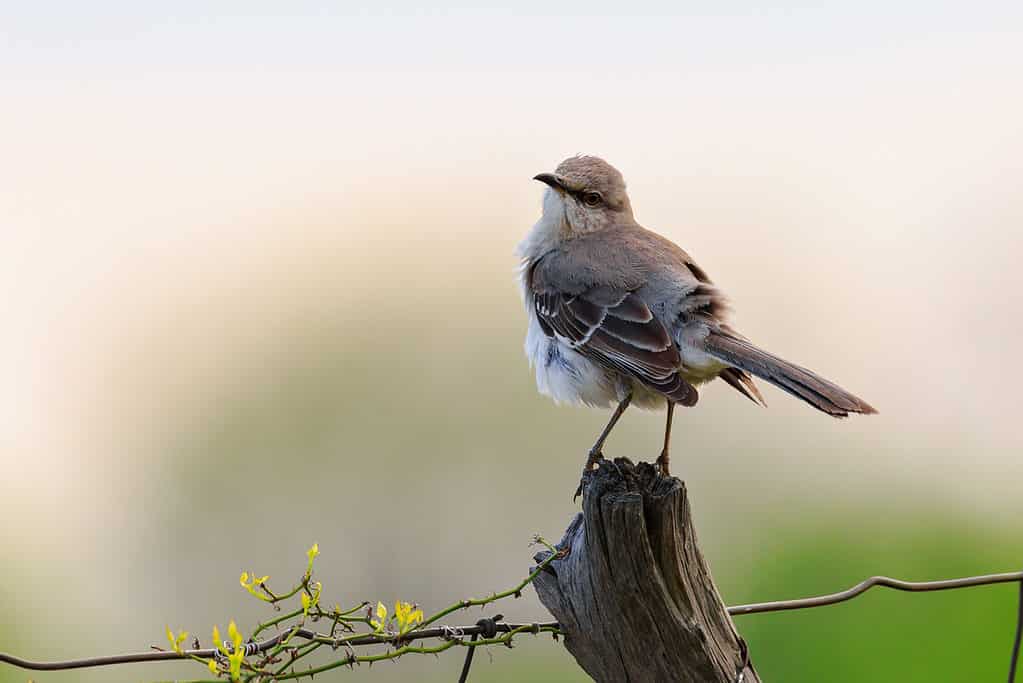The official state bird of Texas is a beloved and iconic symbol of the Lone Star State. Found in a variety of habitats throughout the state, this bird is known for its striking plumage and unique behavior. Whether you’re a birdwatcher or enjoy spending time outdoors, observing this bird in its natural habitat is an exceptional experience. Pack your binoculars, grab your camera, and get ready to explore the official state bird of the great state of Texas.
What is the State Bird of Texas?

Texas decided in 1927 that it would cement a special bond between the state and a beautiful feathered creature. The northern mockingbird (Mimus polyglottos) was officially declared the state bird. With its melodious songs and long tail and legs, this medium-sized bird immediately captured the hearts of all Texans.
Why is the Northern Mockingbird the Official State Bird of Texas?
It all started when in 1920, the Texas Federation of Women’s Clubs proposed the mockingbird as the official bird of the state, citing its fierce protectiveness of its home as a symbol of the determined spirit of Texans.
The state legislature agreed, and on January 31, 1927, Governor Dan Moody signed the measure into law, making Texas the pioneer among states in selecting a state bird. The mockingbird’s depiction as a defender of its territory mirrors Texans’ fierce loyalty and protectiveness towards their home state.

The Northern Mockingbird, Mimus polyglottos, does not migrate but stays year-round in Texas.
©Jenny Gong/Shutterstock.com
It is also said that Texas chose the northern mockingbird as its official bird due to its unwavering loyalty to the state. Even in the face of the state’s extreme weather conditions, with scorching summers and freezing winters, the mockingbird chooses to stay put and call Texas its year-round home.
Unlike many other bird species, it does not migrate to warmer climates during the winter but stays put, much like how Texans stay true to their home state. It is a crime to kill a mockingbird, hence the book’s title. Killing a mockingbird is punishable by up to six months in jail.
Meet the Northern Mockingbird
Appearance
The northern mockingbird, known for its impressive mimicking abilities and enchanting melodies, boasts a distinct physical appearance that sets it apart from other birds. Both males and females share a similar physical resemblance, with males growing only slightly larger than females.
Their plumage is a breathtaking display of gray on the chest and upper areas, contrasted by a pristine white or light gray belly. The black bill, with a subtle hint of brown at the base, adds a touch of elegance to this already stunning bird.
This bird is quite delicate, with a wingspan of 12-15 inches and a length of 8-11 inches from head to tail. The northern mockingbird is relatively lightweight, only 1.4-2 ounces.

The northern mockingbird plumage is a breathtaking display of gray on the chest and upper areas.
©Chris Klonowski/Shutterstock.com
Behavior
The northern mockingbird is known for its fierce and territorial nature. Throughout the year, both males and females will defend their territory against other mockingbirds, bird species, and domestic animals like dogs and cats.
Females protect their space from other females, while males defend their territory from other males. When two males are disputing territory boundaries, they will fly toward each other, land near the boundary, and engage in a face-off, hopping from one side to another without making any noise. If neither bird backs down, they may engage in a physical altercation, using their wings and claws to fight and peck at each other.
In general, the northern mockingbird is an aggressive bird with a territorial nature.
Feeding Habits
Northern mockingbirds are known for their diverse diet, which changes with the seasons. During the summer, they primarily feed on insects such as grasshoppers, beetles, butterflies, moths, bees, wasps, ants, and earthworms. They also occasionally hunt small lizards.
As the weather turns colder, these birds shift to a diet of berries and fruits, including those from multiflora roses and ornamental bushes. They have also been observed drinking sap from freshly pruned trees.
Breeding
During the spring and early summer, northern mockingbirds engage in breeding behaviors. Research indicates that males of this species utilize song as a courtship behavior during the start of the breeding season to attract potential mates. Both the male and female participate in constructing the nest.
The male handles the building while the female watches for potential predators from a nearby perch. These nests are typically constructed at 3-10 feet above the ground.
During a single breeding season, the northern mockingbird typically lays a clutch of four eggs and then incubates them for approximately two weeks. These eggs are greenish or light blue and speckled with small dots. After hatching, the male and female will work together to feed the chicks for around 10-15 days before they become independent.

The northern mockingbird is thriving in Texas despite several predators of the birds and their eggs.
©iStock.com/cmcneill17
Population
The northern moockingbird population is thriving, with an estimated 43 million individuals found across the country, as Bird Conservancy of the Rockies reported. Northern mockingbirds are a protected species widely distributed across the U.S. and live in Texas year-round.
Predators and Threats
While adult mockingbirds are known for their fierce tenacity, they are not immune to predation. Birds of prey, such as the screech owl, sharp-shinned hawk, and great horned owl, have been known to target adult mockingbirds, but their determined nature makes them less likely prey.
Scrub-jays, however, have been known to kill and eat mockingbirds. Nesting females are also vulnerable to snakes, while fledglings can fall prey to domestic crows, cats, and red-tailed hawks.
The eggs and nestlings of mockingbirds are also a popular food source for various other animals, including cats, blue jays, red-tailed hawks, American crows, swallow-tailed kites, squirrels, and snakes. Despite these challenges, mockingbirds continue to thrive in the wild, their tenacity and determination ensuring their survival.
Conservation Status
The conservation status of the northern mockingbird is at least concern, which means the population of this official state bird of Texas is not in danger.
5 Fun Facts About the Northern Mockingbird
- Northern mockingbirds’ average lifespan is around eight years in the wild. However, in captivity, these birds have been known to reach 20.
- It is the state bird of Florida, Texas, Tennessee, Arkansas, and Mississippi.
- They continue to learn new sounds throughout their lives. Male mockingbirds can learn up to 200 songs in a lifetime.
- Male mockingbirds may have different sets of songs for spring and fall.
- The oldest recorded northern mockingbird was found in Texas and was at least 14 years and 10 months old.
Where Can You See the Northern Mockingbird?
Once primarily found only in the southern parts of the U.S., the northern mockingbird remarkably expanded its range in the 20th century. These birds can now be found throughout most of the continental U.S., Canada, and Mexico.
These adaptable birds have a particular fondness for the edges of forests and open spaces, making parks and suburban areas prime habitats for spotting them all year around.
Northern mockingbirds are known for their territorial nature, using high perches as lookout posts to defend their territory and forage for insects and berries. Their habit of perching atop tall structures makes them easy to spot. In addition, they are also a common sight in backyards.
The northern mockingbird is widespread across Texas and can be found in just about every habitat; however, the best places to see the bird are South Llano River State Park, Enchanted Rock State Nature Area, Friedrich Wilderness Park, and more.
The photo featured at the top of this post is © iStock.com/cmcneill17
Thank you for reading! Have some feedback for us? Contact the AZ Animals editorial team.






